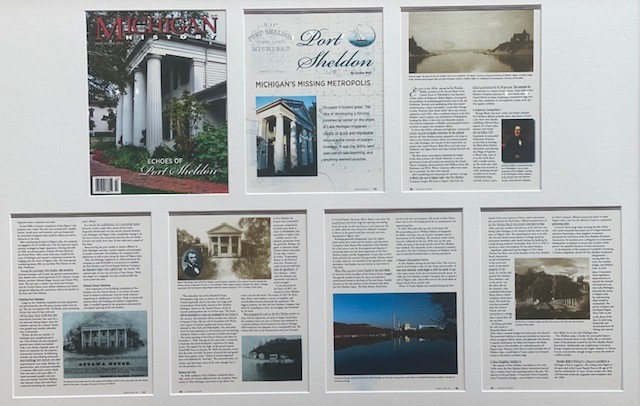The Pike House, built in 1844 and is one of the oldest homes standing in Michigan. The Greek Revival House is one of Michigan’s historical treasures and is listed on the National Register of Historic Places as well as the Library of Congress and on Historic-structures.com.
The Pike House name originates from the 1844 owner, Abram W. Pike. Abram Pike, a fur trader, relocated from Ohio to Michigan in 1827. Before The Pike House, he lived in Port Sheldon, at the mouth of the Pigeon River. There he was employed as the company clerk for the Port Sheldon Land Company.
During the early 1820’s there were hopes that Port Sheldon would become the Detroit of the West. Many structures went up in a short period of time including a church, school, tavern, general store, office, sawmill, boat club, and a grand hotel. The Ottawa House Hotel, one of the more impressive classical structures, was a two story, 29 room hotel with six Greek columns at the front entrance. The hotel was open for five years when the Port Sheldon project came to a halt due to financial ruin. Assets of the project were sold off, some going to Chicago, Detroit, Grand Rapids and Holland. Michigan History Magazine.

In 1844, Abram Pike relocated to Grand Rapids. With him he brought four of the six Greek revival pillars from the impressive Ottawa House Hotel. He pulled the pillars by oxen through the woods from Port Sheldon to Grand Rapids and were incorporated into The Pike House, which stands at 230 E. Fulton St.
The Pike House was a family residence until 1922 when Abram’s daughter deeded the property to the Grand Rapids Art Gallery. A local art enthusiast and collector, Emily Clark, donated $50,000.00 to fund the Art Gallery. The Gallery officially opened in 1924. Soon after opening, the decision was made and the first addition to the house was completed by 1928 and the second by 1930, expanding The Pike House to the 18,000+ square feet it is now.
The Grand Rapids Art Gallery, now known as the Grand Rapids Art Museum called the Pike House its home for 50 years.
From 1981 through 1985 Design Quest Furniture Company occupied the space.
From 1990 through 2004 J.T. French Co. had the property and operated its design and furniture gallery from the space.
In 2006, Design Plus bought and restored the building. The design company made sure to maintain the buildings historical integrity. They identified the original pieces including moldings, wood flooring, opaque glass ceilings and ceramic foundations.
In 2007, when the restoration was complete, the design company moved in to conduct business.
In 2013 The Pike House became available and local bankruptcy and litigation firm, Keller & Almassian, PLC purchased The Pike House property and completed exterior and interior renovations.
The auditorium in the back was converted into eight offices and four work stations.
During the 2014 building renovations, construction workers uncovered an original “Grand Rapids Art Museum” sign. It was painted in large, bold letters above the entry of the Pike House hidden by boards. Without the prompting from the artist’s granddaughter, this piece of history by founding member of the Grand Rapids Art Gallery, Mathias Alten, may never been uncovered. Mathias Alten was considered Grand Rapids’ most famous artist. Sometime in the 1950’s the word Gallery on the sign was changed to Museum as it is now. Art History Article

The sign has been relocated from the front of the building, to the inside to be prominently displayed in the large hall that connects the old front house to the back auditorium. Legal News Article

Today, the Pike House has completed yet another face lift. The owners have added nine more office spaces, two more conference rooms and seven work stations in the lower level. The owners continued The Pike House integrity with this renovation, bringing the original wooden and concrete walls back to life and polishing the floors for a contemporary Michigan appearance. This newly renovated space is known as the Gallery.

